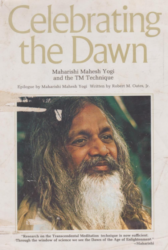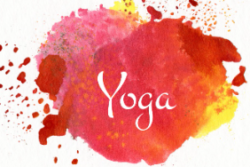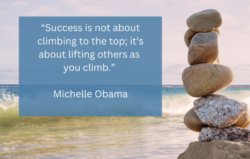Wellness, Well-being and Being

I recently read that there is an initiative amongst some health and spa leaders to focus on wellness (health) rather than well-being (happiness and emotions). This gave me pause. Half a century ago, the concept of a mind-body connection didn’t even exist, not to mention such a nuanced distinction between wellness and well-being. In fact, when the first research study by Dr. Robert Keith Wallace on the Transcendental Meditation technique was published in Scientific American in 1972, it rocked the scientific community.
It’s hard to believe now, but at that time the notion of a mind-body connection was downright revolutionary. Scientists were intrigued—and some clearly outraged—when Dr. Wallace’s research demonstrated that the simple, natural mental technique of Transcendental Meditation created such profound changes in the body. For instance, the research showed that the heart rate decreased, the breath rate slowed, and the body entered a deep state of relaxation.
Fast-forward forty-four years, and the mind-body connection is no longer disputed in scientific circles. If anything, it’s the prevailing paradigm.
For instance, scientists today report that emotions deeply affect the body by producing thousands of neurotransmitters, the chemical messengers that carry a signal from one nerve cell to another and race through the body at lightening speed. So if a person feels satisfaction, feels calm, feels relaxed, is happy about the future, is enjoying, then pretty much all systems in the body are positively impacted. On the other hand, if a person is feeling angry, afraid, or nervous, stress hormones race through the body and create havoc on cells and organs.
You could even say that the physiology is the receptacle of the psychology. Maharishi Mahesh Yogi, the founder of the Transcendental Meditation technique, once said that if you want to know what your mind was like in the past, look at your body now. If you want to know what your body would be like in the future, look at your mind now. In other words, the mind precipitates the body.
It can work the other way too—the condition of the body affects the mind. For example, if someone is in an accident and experiencing a lot of pain, even a normally happy person could experience depression or anxiety due to their physical condition.
The environment also influences our mental and physical health. Supposing a person lives in an environment of extreme air pollution. If the toxins build up over time, it could cause depression or even cancer. Thus the air the person breathes, the water a person drinks, the food a person eats—all of these things impact the health of mind and body.
So even though we talk about the functions of the mind or talk about the functions of the body, in fact, we’re driving one car not two. It’s one overall system that you could call the mind-body, the body-mind, or the mind-body-emotions-environment system. It’s all one system, and every part of the system affects every other part.
Yet of all the parts of the system, it’s easier to change the mind than the body. So we start with the mind to influence the body, the emotions and the environment in the same way that we think of a dining table as one unit, but if you pull one leg then the whole system/table moves. Of all the four, the mind is the easiest to change.
In other words, we can have the greatest effect on our health by changing the quality of our minds.
Are Positive Feelings Real?
Yet the question remains: how do you cultivate a positive state of mind in the first place?
After all, it’s not something a person can just decide: I’m going to think positive thoughts, I’m going to be happy, I’m going to spend my day in gratitude. We all know how easy it is for those good intentions to fly out the window when life gets difficult. We’ve all experienced how easy it is for our minds to get overwhelmed by all kinds of stresses and strains from the past, and stresses and strains from the present.
Take the person returning from a wellness retreat in the Caribbean. She’s smiling, she’s relaxed, she’s chill. She’s telling the person sitting next to her on the plane how stressed she was feeling before the retreat, how different she feels now.
That goes on until the flight attendant announces that there’s been a mechanical difficulty and the plane will be stuck waiting on the tarmac for at least an hour. And the air conditioning is broken.
The woman realizes she’s going to miss her next flight, and possibly even will have to miss work the following day. As temperatures rise in the plane, her good feelings are gone—she’s back to her usual stress cycle of agitation, worry and fear.
So were those positive feelings real in the first place? I think they were real, but until the mind is fully stabilized, we are a football to our environment. In other words, our feelings keep changing and our sense of happiness is often affected by our outer circumstances.
There has to be a way to become anchored in a stable, infinitely regenerative source of happiness and well-being that does not fade with changing circumstances. Fortunately, we don’t have to look far for this stable source of happiness. It’s inside us at the very core of our being, within our own consciousness, within our own self. Beyond our deepest emotions, beyond the deepest state of mind, lies the state of pure being, which is our very essence.
Being: Our Innermost Self.
It makes sense that at the basis of well-being is Being. Being could be defined as the deepest, most profound sense of self. It has also been called pure awareness, or pure consciousness. It’s not consciousness OF something. It’s not how I’m thinking about my family, thinking about my home. It’s the fact that “I am”; it’s am-ness, pure being, pure awareness. It could also be called the simplest form of awareness.
Another way to think of Being, or pure awareness, is that it’s the screen of consciousness upon which the film of our life plays out. In this analogy, the TV projects the story of our life onto a blank screen. The projection can only be as clear and refined as the screen. In other words, if you have a 4K high-resolution screen, the movie of life is going to look pretty amazing. If the screen is fuzzy or irregular, it’s going to affect your experience.
In the same way, if your consciousness is clear and rested and shining, everything you experience will reflect that clarity and happiness. If you are tired and feeling dull or stressed, the same joyful event could feel depressing.
So our experience of life depends on the quality of our awareness, the quality of consciousness itself.
How Do We Cultivate Pure Being?
In the Vedic literature, a state of being established in pure awareness is described by the term called sva rasa vahi. Sva means “Self,” rasa means “essence,” and vahi means “carried.” Thus one is “carried by one’s own essence.” This refers to the phenomenon when a person spontaneously, naturally, thinks and acts from a state of happiness, bliss and fullness. It’s not that a person is trying to be positive—they actually feel that way. The person’s mind is firmly established in that condition. This is a state of self-knowledge, swasthya, or total health.
Fortunately, these ancient texts also describe a technique for achieving this state of perfect balance and health. Maharishi has revived this ancient technique in modern times and called it Transcendental Meditation.
As researchers such as Dr. Wallace have shown, the Transcendental Meditation technique allows the mind to experience pure being, or pure consciousness. Researchers describe it as a state of heightened awareness in the mind and a state of deep rest in the body. The deep rest allows deep-rooted stresses to be dissolved.
When practiced regularly, day after day, this state of pure consciousness, pure being, begins to be experienced even when in activity. Positive thoughts and balanced functioning of the body becomes the norm; stress and negativity become things of the past.
Then the neurotransmitters going to all parts of the body are having a positive effect on the mind and body. A person’s blood pressure goes down, their happiness level goes up, their moral judgment and decision making improves, their cholesterol goes down—all these measures show that when a person is connected to their own being, a variety of positive measures occur, including wellness and well-being.
While I don’t agree that we need to separate mind and body when talking about health, perhaps we could say that both wellness and well-being are important, and both are dependent upon being. Pure being, or pure consciousness, is the source of thinking, feeling and acting. Maharishi often said, “Water the root to enjoy the fruit.” By this he meant to enliven being, become established in pure consciousness, as that is the foundation for a healthy mind and body.
“If we take care of the sap, the whole tree will flourish,” Maharishi wrote in the Science of Being and Art of Living in 1963. “Similarly, if we take care of Being the whole field of thinking and doing will flourish. The whole field of life can be glorified by consciously taking care of Being.”
About the Author
Linda Egenes writes about green and healthy living and is the author of six books, including The Ramayana: A New Retelling of Valmiki’s Ancient Epic—Complete and Comprehensive, co-authored with Kumuda Reddy, M.D.
More Posts by Linda
- Tired and Burned Out? Transcendental Meditation Can Help: An Interview with Dr. Nancy Lonsdorf, MD
- Worried About the Future? Six Ways to Calm Your Anxiety
- What Do You Carry in Your Self-Care Tool Kit?
- Five Strategies for Family Caregivers
- From the Streets to College in Four Months: The Communiversity of South Africa Empowers Underserved Youth in Cape Town





